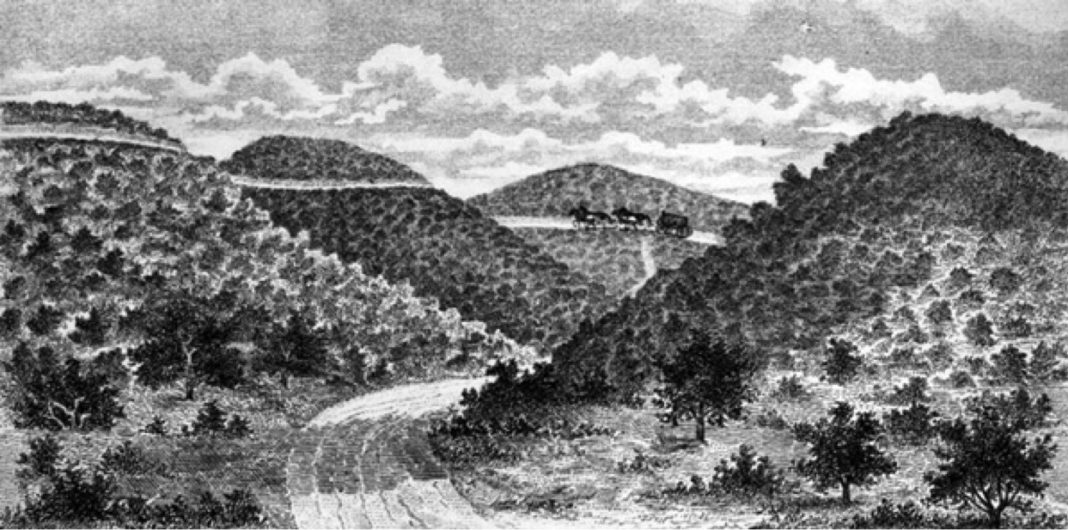LAUREL CANYON—It’s in your back yard! – DAHH – You’ve probably driven by it a million times. Studio City’s Campo de Cahuenga at 3919 Cahuenga Boulevard (91604) is just north of the Studio City/Universal City MTA stop. You can peek down on the Campo from the northern end of the skywalk or – You can see it on the western side of the street through the black metal gates.
So what’s the BIG deal?
IN THE BEGINNING – You have to reach back to the Viceroyalty of “New Spain” in the early 1800s to understand how the events in Studio City changed the world. New Spain covered most of the United States. The Spanish King had given prime agricultural lands to missionaries. First the Jesuits, then the Franciscans, hoping to use these as launch points for colonies to bring wealth back to the king’s coffers and exploit the indigenous people and colonists. Mexico got sick of Spanish rule. It won its independence in 1821. Church lands where distributed to civilians and racial laws were eliminated. Today’s California was loosely ruled as the Mexican territory of Alta California.
Then the Mexican Empire continued the tradition of sending appointed Governors to control Alta California (that’s us). Even though missions and pueblos felt autonomous (Los Angeles had an alcalde (mayor) and town council), everyone reported to a military officer. They could be overruled by a (lowly) designated sergeant assigned to the Santa Barbara presidio (the closest fort).
Meanwhile: The United States (think Washington, DC. and President Polk) wanted to push the US borders from the Mississippi west to the Pacific Coast. Californios (first native born Californians of Mexican decedent) declared war on Mexico, [The Mexican-American War – May 13, 1846] seeking the same freedoms that Mexico sought from Spain.
Various Mexican governors were appointed, some of whom agreed that the church land should be de-secularized and distributed to individual citizens. Successive governors went back and forth on this issue. In 1831, tensions boiled over when the military governor of California, Manuel Victoria, attempted to reverse reforms which would secularize land (strip the church of its land ownership).
The Californios who stood to gain the lands were outraged. Victoria refused to call the territorial disputacion (legislature) into session, exiled two leading citizens of Los Angeles and jailed at least 100 others, and vowed to resist attempts to secularize the missions.
The penultimate battle was short. “Would-be rancheros raised a small rebel force of Angelinos joined by troops from the San Diego presidio, marched on Los Angeles, freed the town’s political prisoners, and proclaimed the pueblo liberated”.
A battle ensued in the Cahuenga Pass were Californio military and American soldiers clashed, without doing much hard to either side. Even before this battle began it was contemplated that a peace accord would be reached.
The Mexican-American War formally ended on January 13, 1847 when the 1847 Capitulation of Cahuenga (aka the Treaty of Cahuenga). The handwritten documents (in both Spanish and English) were signed at the original site of the Campo de Cahuenga, which later served as a Butterfield Stage Coach stop, most likely called the “Crow’s Nest” or the “8 – Mile” station.
While the seminal document was called a capitulation, the Californios got what they wanted. The Americans got what they wanted. The church was stripped of its land. Locals were given the same rights as US citizens to hold land titles; take an oath of loyalty to the United States, or return to Mexico. Indigenous and black people – about 40% of the local population – were able to hold land titles.
California was to become the 31st state of the Union. This is how and why the United States reached from “Sea to Shining Sea”, honored in the patriotic song America the Beautiful!






